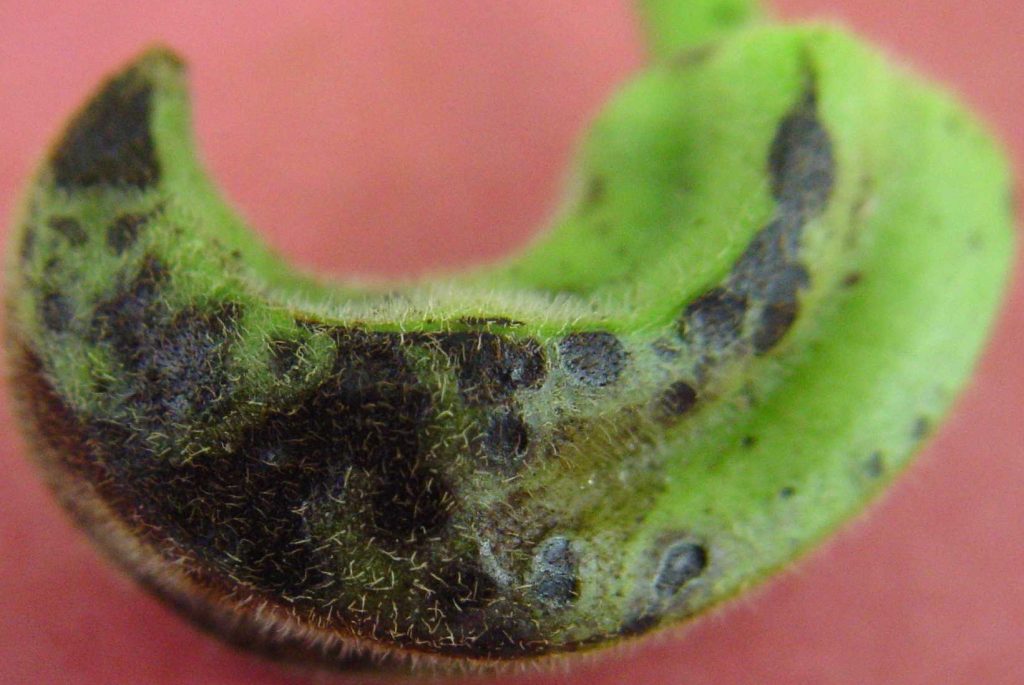(Xanthomonas pv. phaseoli)
Credits: Biovision-Infonet

(c) A.M. Varela & A.A. Seif, icipe

(c) A.A. Seif & A.M. Varela, icipe
Leaf spots first appear as small, water-soaked or light-green areas on leaflets. They later become dry and brown. The spots may join to affect much of leaf surface eventually killing the leaflet. Similar water-soaked spots develop on pods. The spot margin is a shade of red. Severely diseased pods shrivel. In humid weather, a yellowish crust of the blight bacteria covers the spot surface.
What to do:
- Cultural practices are important in controlling bean blights. Eliminate weeds, volunteer beans and other potential hosts of bean blight, as this will reduce disease incidence.
- Good weed control will also improve aeration around the crop so that the plants dry faster, this will reduce the chances for bacterial spread and infection.
- The bacteria are readily spread by water, and walking or working in the field while plants are wet will splash the bacteria and create wounds. Therefore avoid field operations when it is wet.
- A rotation of at least 2 years between bean crops will give time for the bacteria population to decline in the debris.
- Deep ploughing will also encourage the breakdown of infected plant debris.
- The incidence of bean blight can also be reduced if beans are grown with maize rather than in a monoculture.